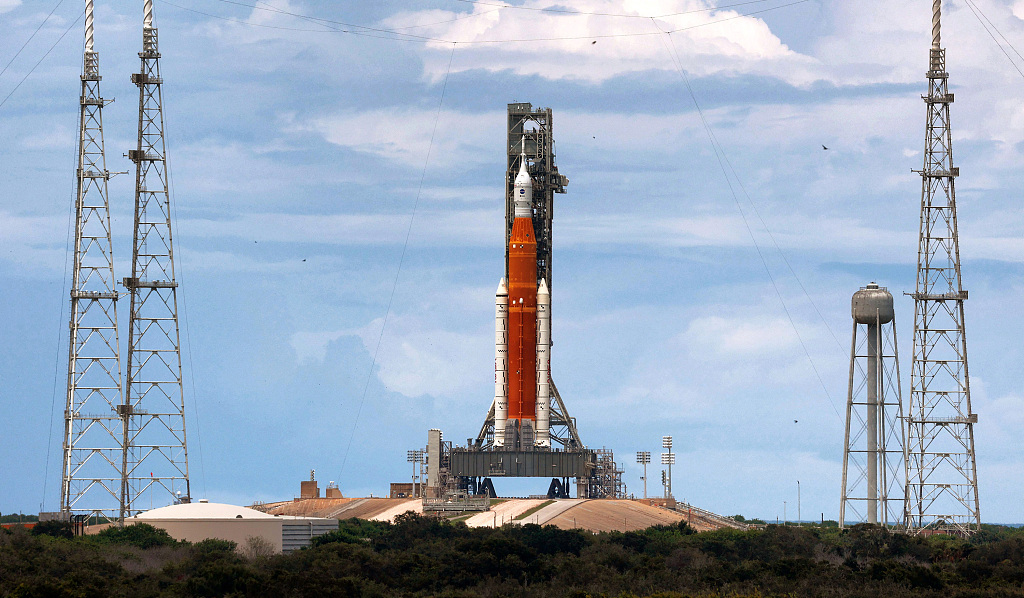
Artemis I, NASA's Space Launch System heavy-lift rocket carrying the Orion spacecraft, sits at Launch Pad 39-B at Kennedy Space Center, Florida, August 28, 2022. /CFP
Artemis I, NASA's Space Launch System heavy-lift rocket carrying the Orion spacecraft, sits at Launch Pad 39-B at Kennedy Space Center, Florida, August 28, 2022. /CFP
NASA has scrubbed an attempt to launch its Artemis 1 mission on Monday because of a problem detected on one of the rocket's main engines, after launch teams had begun filling the rocket's core fuel tanks with super-cooled liquid oxygen and hydrogen propellants.
The Artemis 1 mission was set to send the Space Launch System (SLS) rocket and an uncrewed Orion spacecraft on a roughly 40-day journey around the moon.
The countdown was halted about 40 minutes before launch time as the 32-story-tall, two-stage SLS rocket and its Orion crew capsule awaited liftoff from the Kennedy Space Center in Cape Canaveral, Florida. Mission engineers struggled to properly condition that engine to the right temperature for launch, the agency said.

NASA's Orion service module for the Artemis 2 mission stands in the Operations and Checkout Building during a media tour at Cape Canaveral, Florida, U.S., August 28, 2022. /Reuters
NASA's Orion service module for the Artemis 2 mission stands in the Operations and Checkout Building during a media tour at Cape Canaveral, Florida, U.S., August 28, 2022. /Reuters
NASA did not give a new launch date but said its first available backup launch opportunity was set for Friday, September 2.
Whether the agency sticks with that date depends on how quickly engineers can resolve the engine issue. The subsequent launch opportunity is Monday, September 5.
The maiden journey of the SLS-Orion marks the kickoff of NASA's highly vaunted moon-to-Mars Artemis program, the successor to the Apollo lunar missions of the 1960s and 1970s.
The voyage is intended to put the 5.75-million-pound vehicle through its paces in a rigorous demonstration flight, pushing its design limits, before NASA deems it reliable enough to carry astronauts in a subsequent flight targeted for 2024.
Billed as the most powerful, complex rocket in the world, the SLS represents the biggest new vertical launch system the U.S. space agency has built since the Saturn V rocket flown during Apollo.
If the first two Artemis missions succeed, NASA is aiming to land astronauts back on the moon, including the first woman to set foot on the lunar surface, as early as 2025, though many experts believe that time frame is likely to slip by a few years.
The last humans to walk on the moon were the two-man descent team of Apollo 17 in 1972, following in the footsteps of 10 other astronauts during five earlier missions beginning with Apollo 11 in 1969.
The Artemis program seeks to eventually establish a long-term lunar base as a stepping stone to even more ambitious astronaut voyages to Mars, a goal that NASA officials have said will probably take until at least the late 2030s to achieve.
The program was named for the goddess who was Apollo's twin sister in ancient Greek mythology.
(With input from Reuters)

